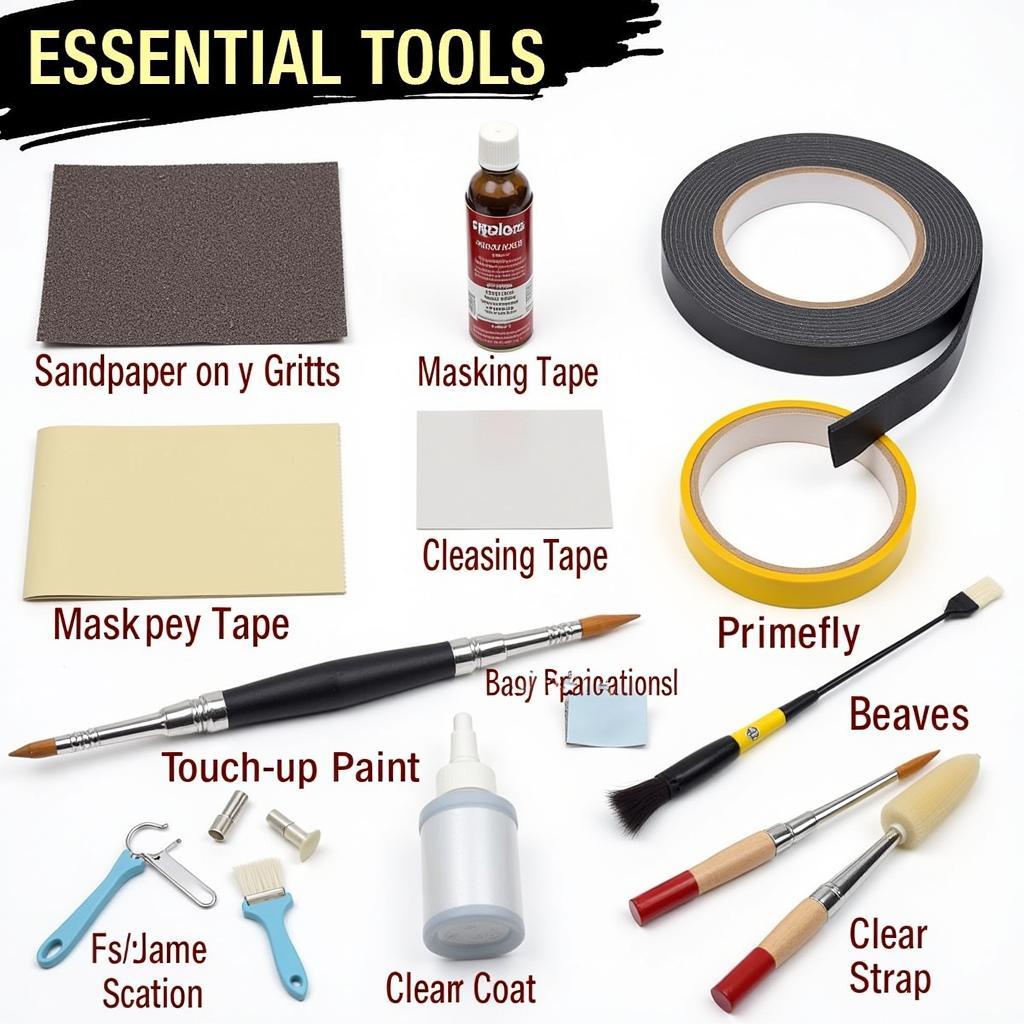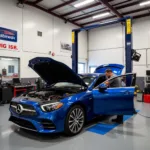DIY car paint crack repair can seem daunting, but with the right knowledge and tools, you can achieve professional-looking results and save money. This guide provides a step-by-step approach to fixing those annoying cracks in your car’s paint, restoring its appearance and protecting it from further damage.
Understanding Car Paint Cracks
Before diving into the repair process, it’s crucial to understand the nature of car paint cracks. These cracks, often referred to as “crazing” or “checking,” can be caused by various factors, including impacts, UV exposure, improper paint application, and temperature fluctuations. Identifying the cause can help prevent future cracking. Knowing the severity, from hairline cracks to deep fissures, will determine the appropriate repair method. For minor imperfections, you might consider solutions like super glue to repair crack in car paint.
Now, let’s look at some of the most common causes of paint cracks:
- Impact damage: Stones, debris, and even minor collisions can chip or crack the paint.
- UV exposure: Prolonged exposure to sunlight can degrade the paint’s elasticity, leading to cracking, similar to how sun damage affects car paint overall.
- Poor paint application: Applying paint too thickly or in unfavorable conditions can result in cracking as it dries.
- Temperature changes: Extreme hot or cold temperatures can cause the paint to expand and contract, leading to stress cracks.
Preparing for the Repair
Proper preparation is essential for a successful DIY car paint crack repair. Start by thoroughly cleaning the area around the crack with soap and water, then degrease it with a specialized cleaning agent. This ensures proper adhesion of the repair materials. Next, carefully sand the cracked area using fine-grit sandpaper to smooth the surface and remove any loose paint flakes. Remember to mask off the surrounding area to protect the undamaged paint. If you’re dealing with more extensive damage, researching fading car paint repair techniques could be beneficial.
Here’s a step-by-step guide to preparing the cracked area:
- Clean: Wash the area thoroughly with car wash soap and water.
- Degrease: Use a wax and grease remover to ensure a clean surface.
- Sand: Gently sand the cracked area with fine-grit sandpaper (e.g., 2000-grit).
- Mask: Apply masking tape around the repair area to protect the surrounding paint.
Applying the Repair Materials
Choosing the correct repair materials is critical. For minor cracks, a touch-up paint pen or a small brush can be used to apply automotive primer and paint. For deeper cracks, you might need to use a filler or putty before applying the primer. Carefully apply thin coats, allowing each layer to dry completely before applying the next. Finally, apply a clear coat to protect the repair and blend it with the surrounding paint. This is a similar process to how you would approach car paint stone chip repair.
“Applying multiple thin coats is far more effective than one thick coat,” advises John Smith, a veteran auto body specialist at Smith’s Auto Body. “Thin coats dry more evenly, reducing the risk of runs or bubbles and ensuring a smoother finish.”
Finishing Touches and Prevention
After the clear coat has dried, lightly sand the repaired area with very fine-grit sandpaper (e.g., 3000-grit) to blend the repair seamlessly. Finally, apply a polishing compound to restore the shine and protect the paint. To prevent future cracks, avoid parking in direct sunlight for extended periods, wash your car regularly, and address any minor chips or scratches promptly. For residents of specific areas, searching for something like “car paint repair Seattle” can help find local professionals for more complex repairs.
“Regular waxing and polishing not only enhance your car’s appearance but also provide a protective layer against UV rays and environmental contaminants, minimizing the risk of paint damage,” adds Maria Garcia, lead technician at Garcia’s Auto Detailing.
Conclusion
DIY car paint crack repair is achievable with patience and attention to detail. By following this comprehensive guide and using the right techniques, you can effectively repair minor cracks, restore your car’s appearance, and prevent further damage. Remember, preparation and the application of thin coats are key to a successful repair.
FAQ
- Can I use any type of paint for touch-ups? No, use automotive touch-up paint specifically formulated for your car’s make, model, and color code.
- How long should I wait between coats? Follow the manufacturer’s instructions on the paint products for drying times.
- What if the crack is very deep? For deep cracks, consult a professional for repair sun damage on car paint and other complex issues.
- Can I repair cracks on plastic bumpers? Yes, but use plastic-specific repair products.
- How can I prevent future cracks? Regularly wash and wax your car, park in shaded areas, and address minor chips promptly.
- What can I do about scratches on the car paint? Check our guide on car paint stone chip repair.
- How can I fix fading car paint? Check our guide on fading car paint repair
Further Questions?
For more information on car paint repair, check out our guides on super glue to repair crack in car paint and repair sun damage on car paint.
Need further assistance? Contact us via WhatsApp: +1(641)206-8880 or email: cardiagtechworkshop@gmail.com. Our customer support team is available 24/7.



